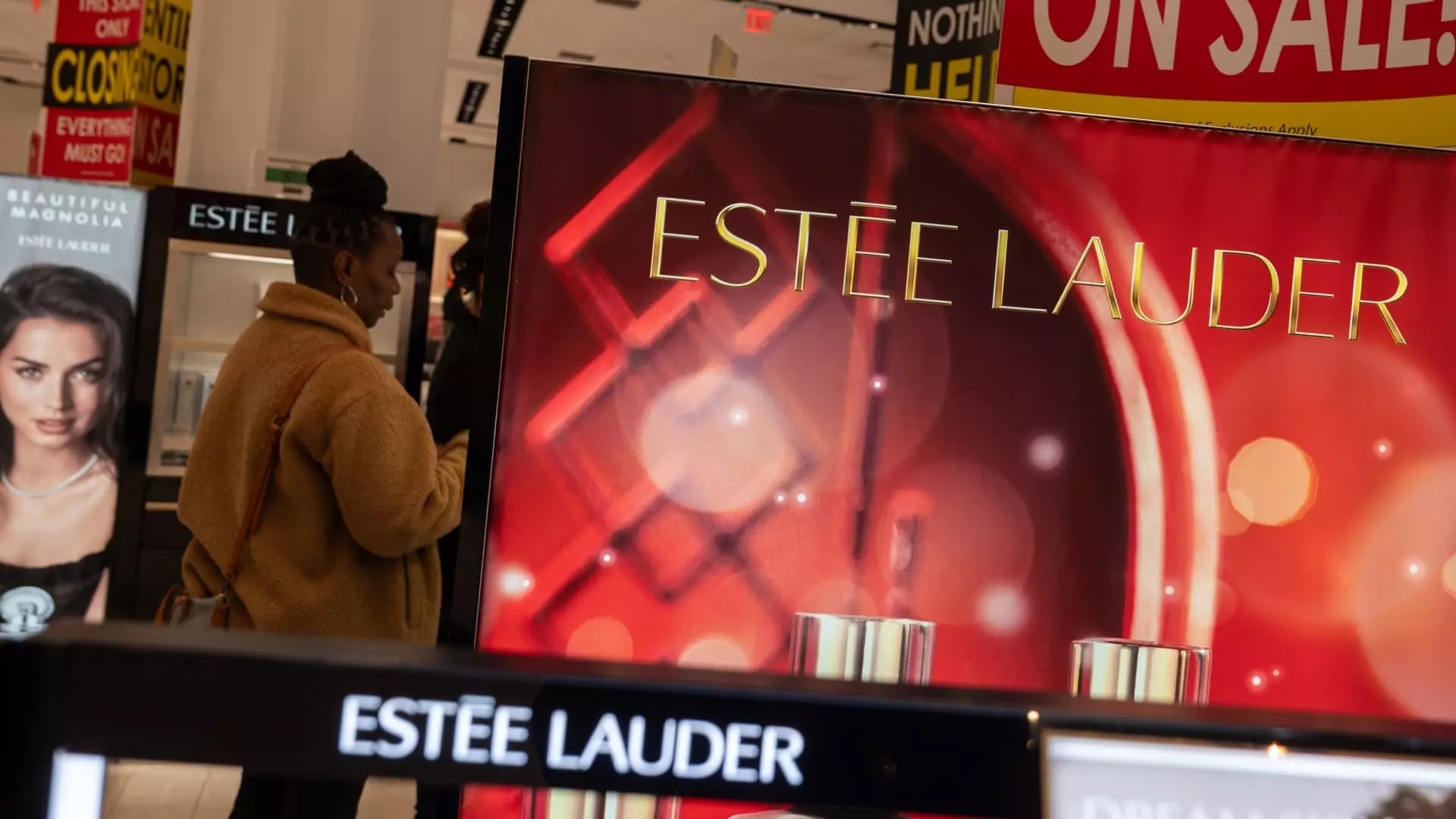This past week has seen significant turmoil in the beauty stock market sector, epitomized by the disappointing performances of notable brands such as E.l.f. Beauty and Estee Lauder. The overall sentiment following their earnings reports has led to a stark decrease in share prices, raising concerns among investors about the sustainability of these companies amidst shifting market conditions. E.l.f. Beauty, in particular, experienced its most severe weekly loss in nearly five years, with shares plummeting nearly 29% over the course of just one week.
Despite E.l.f. Beauty managing to exceed revenue expectations for its fiscal third quarter, the decline in adjusted earnings per share and a downward revision of its full-year revenue guidance proved alarming. The company slashed its sales forecast to a range of between $1.3 billion and $1.31 billion, a noticeable drop from the previous estimation of $1.32 billion to $1.34 billion. CEO Tarang Amin’s comments during a CNBC interview reveal a concerning trend; that the overall cosmetic sector saw a 5% slump in January due to reduced consumer engagement in beauty products following the holiday season. The reaction from market analysts has been swift and unsparing, with firms like Morgan Stanley, D.A. Davidson, and UBS downgrading E.l.f. to neutral ratings, reflecting a loss of confidence in the brand’s short-term trajectory.
Estee Lauder’s Employment Cuts and Market Reaction
Compounding the woes of the beauty sector, Estee Lauder faced a dramatic 22% drop in share value, marking its worst week since November. The company announced plans to reduce its workforce by a notable margin of nearly 7,000 positions by 2026, a move resulting from anticipated decreases in sales due to dwindling travel retail demand in Asia. Despite reporting strong second-quarter revenue and earnings, the negative ramifications of this job reduction announcement weighed heavily on investor sentiment. CEO Stéphane de La Faverie openly acknowledged during the earnings call that the company’s agility had faltered and expressed regret over missed growth opportunities.
Other players in the industry, including Ulta Beauty and Coty, also felt the heat this week, experiencing declines of approximately 9% and almost 8%, respectively. The struggles at Ulta, one of E.l.f.’s key retail partners, were noted by Amin, who cited “a little bit of softness” in January as a contributing factor to E.l.f.’s struggles. The cumulative downturn in these stocks highlights the interconnected nature of the beauty industry, with one company’s difficulties often spilling over into the broader market.
External Factors Compounding Industry Challenges
The threat of tariffs presents an additional layer of complexity to these issues. With China implementing tariffs on select U.S. imports as a countermeasure to American tariffs, the beauty industry, which relies on production in China, faces incoming pressure on profitability. Although E.l.f. was relieved to see the proposed tariffs hold at 10% instead of the previously considered 60%, the potential impacts on manufacturing costs and pricing strategies loom large over the future profitability of these beauty brands.
The beauty sector is grappling with a confluence of adverse conditions, from disappointing earnings to external economic pressures. Investors will need to closely monitor these developments as companies work to navigate these turbulent waters.

